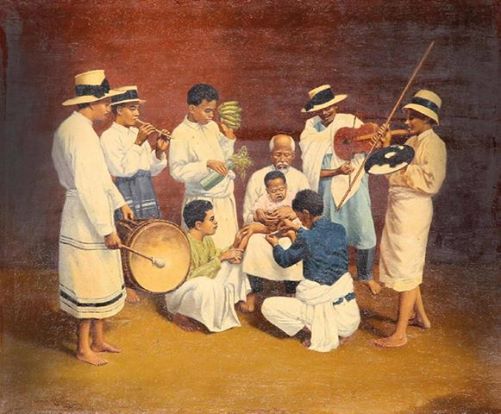Circumcision in Madagascar ‒ Here in Madagascar, despite a rather harsh winter, people do not forget to cultivate their joie de vivre. It is between the months of July to October that we feel the festive spirit awakening.
In short, winter in Madagascar is traditionally festive: Famadihana (exhumation of the dead), Fisemana (a purification ceremony specific to the Antakarana ethnic group)... but the most spectacular winter tradition is undoubtedly the "Didim-poitra" or circumcision. .
Circumcision in Madagascar, more than a custom
Circumcision is a ritual removal of the foreskin practiced by all Malagasy (except some Antandroy clans). This ceremony has several names depending on the tribes: " Didim-poitra ", " Famorana " or even " Fahasoavan-jaza " in the Imerina region, " Savatse " in the South-West region and " Sambatra " in the South-West region. Is.
Admittedly, the rituals vary according to the regions, but the procedures are often the same. Among the Antambahoaka, for example, the " Sambatra " takes place every 7 years in October, while it is practiced annually in other regions of Madagascar.
Roots and birth of circumcision in Madagascar
Ancient accounts mention King Andriamanelo as the instigator of this ancient rite. It should also be remembered that this civilizing king of the 16th century was at the origin of many important innovations such as the forging of iron or the consumption of zebu meat.
Later, this custom was promoted as a national holiday by Andrianampoinimerina. It was during the reign of the latter that the practice of "Didim-poitra" will know its last improvements and its apogee. Thus, the king established a seven-year circumcision (every 7 years) compulsory in his kingdom.
But why every 7 years? Because the year of Friday only comes every 7 years. However, circumcision in Madagascar must take place in a year that begins with a Friday, which is a holy day for the Malagasy. Until today, this rite is still held in great honor among the Antambahoaka of Mananjary.
However, this seven-year celebration had its last days in 1869 in the region of Imerina, under the reign of Ranavalona II who had just abandoned the traditional Malagasy religion in favor of Christianity. Since then, this ceremony has no longer become public and is practiced in private.
The symbolism of circumcision in Madagascar
Although circumcision in Madagascar appears, at first sight, to simple celebrations, this ancestral rite actually takes on a deep meaning. The symbolism that emerges from this practice is that by abandoning his foreskin, the little boy acquires his status as a man. Moreover, an uncircumcised man will have no chance with a woman and cannot be buried in the family tomb (fasan-drazana).
How does a circumcision take place in Madagascar?
For the destiny (tonom-bitana) of the little boy to be strong and favorable, his circumcision must be done during the rising moon. The full moon is not recommended, because it would promote bleeding.
Generally, a circumcision in Madagascar takes place in the house of the boy to be circumcised. The operation will be done at dawn (ideally before 5 a.m.), but the day before, at dusk (somambisamby), a young man whose father and mother are still alive (velon-dray aman-dreny, zaza tsy kamboty), will be in charge of recovering the sacred water or " rano mahery " at the foot of a mountain. This water will be used to clean the hands of the traditional healer or "rain-jaza", the knife (or a bamboo) and the wound left by the operation. Sugar cane stalks (to wish for a "sweet" life or a happy life) and bananas (to have male offspring) are also placed in the house. The family will celebrate throughout the evening where feasts, songs, and " toaka gasy " will be served in abundance. The men who will take part in the ritual must observe 8 days of fasting preceding the circumcision. They will also have to do different jobs and all the household chores or risk making the little boy cowardly.
On D-Day, only men (grandfather, father, uncles) are allowed to take part in the ceremony. The "rain-jaza" will cut the foreskin with a knife or bamboo. The blood that spills on the ground symbolizes the unification of the little boy with the land of his ancestors.
Depending on the tribes, it will be the grandfather or the maternal uncle (zaman-jaza) who will swallow the foreskin, with a banana as an accompaniment. The child is then welcomed by a jubilant crowd who showers him with gifts. The phrase "arahaba ririnina e! is pronounced to congratulate and wish happiness to the boy and his parents.
At the end of the celebration, the family pays the " rain-jaza " with cash, a rooster or a chicken.
Traditional Malagasy circumcision is a practice still preserved in Madagascar. Nevertheless, some parents today opt for more modern methods such as American circumcision or cauterization for hygienic reasons. The cost of such operations is generally between 100,000 Ar and 200,000 Ar.
© All rights reserved – Mada-Actus.info
Circumcision in Madagascar
06/07/2019
0 comment



Comment (0)